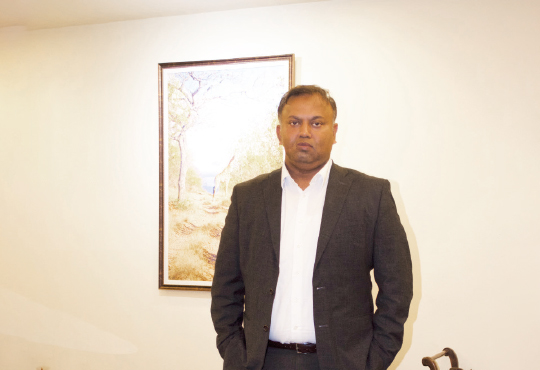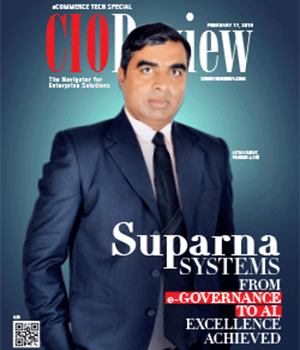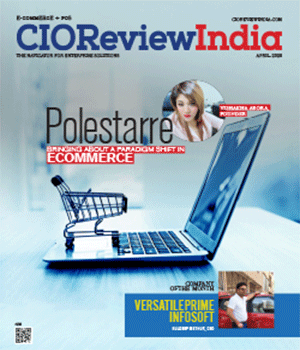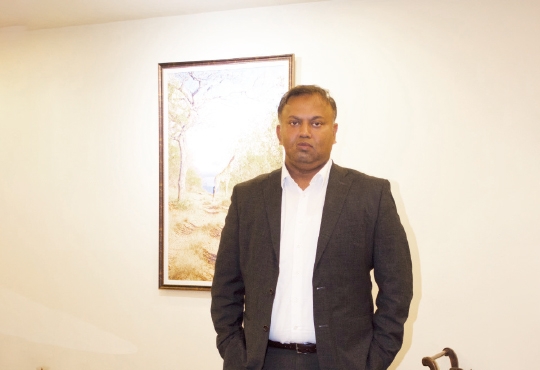
Digitalizing Legacy IT
Milan, CIO, Wabco | Friday, 06 April 2018, 06:52 IST
 Milan has an excellent exposure to Onsite-Nearshore - Offshore working models and has managed multiple transitions of large sized projects in multicultural environments. He is a proven Global transformational leader with a sustained track record of success in driving innovation in a wide variety of start-ups, turn-around, and rapid change environments.
Milan has an excellent exposure to Onsite-Nearshore - Offshore working models and has managed multiple transitions of large sized projects in multicultural environments. He is a proven Global transformational leader with a sustained track record of success in driving innovation in a wide variety of start-ups, turn-around, and rapid change environments.
Acording to a report by the University of Surrey, "Although many core systems have become efficient and stable over the many decades of their existence, they are now seen as a key obstacle in the rapid evolution to a fully integrated digital business.”
"Apart from choosing the best strategy for the digital modernization, the process involved is more significant for ensuring a smooth migration to a new system"
It is imperative for organizations to reconsider their business models and prepare them for the digital environment, consequently bridging the lacunae between current technology and customer expectations. More than the legacy system, the innovativeaverse mindset associated with it is a bigger problem.
Apart from choosing the best strategy for the digital modernization, the process involved is more significant for ensuring a smooth migration to a new system. Let us see a few of the steps involved.
1. Analyze the Legacy System
It would be wrong to adjudge every legacy system as obsolete.
A legacy system needs more than just the 'old' aspect to be identified and assessed for legacy in a correct manner. This makes it imperative to study all existing systems to list downcurrent and potentialissues that can show up in the foreseeable future. Needless to say, an exhaustive, detailed and clinical assessment approach has to be adopted. Apart from the conventional aspects of technology like architecture, programming code, UI and UX, the organization’s future business strategy regarding its product needs to be considered as well.
2. Fastest in Delivering Value Since the business is already functional, any method of modernization followed should be fast enough in delivering results accurately. Making the choice should also allow a provision for reusability of existing products. With Cloud Technologies like Software as a Service (SaaS) available, cost of modernizing can easily be reduced by a significant margin. In case extra features are to be added to the legacy system or if it performs specific tasks, a customized solution design would be apt for it. Agile development methodologies can help speed up the entire process and ensure faster delivery of value.
3. Simplistic Re-Architecture Performance issues of legacy systems are normally associated with their complex or over-complex design. Modernization should maintain a minimalistic view in architecture re-design and functionality implementation. Needless to say, modules with critical functionality get implemented first. Also, since product scalability is a key concern, it is worth considering a micro-services architectural approach for the redesign. Apart from this, all other tools involved in the entire data flow should also comply with the newly redesigned application. A separate change requirements repository needs to be maintained for them as well if they are to be modified or replaced.
4. Security
Legacy systems always run the risk of being more susceptible to security risks, since most of them are far beyond their warranty period and not updated for latest security updates from their vendors, resulting in considerable security gaps. To ensure a robust, fool proof modernized application, it is of paramount importance to foster a development culture aimed for reduction of security and quality risks, especially in mission critical modules. Stringent testing should also be formed for unearthing security lapses going live.
5. Documenting the Project Learnings
Functional short comings or bad designs of the legacy system need to be documented to avoid repetition of the same in the new, redesigned application. Risk Assessment, as well as the risk mitigation techniques, should also be included. This should also encompass industry coding standards, best practices and other architecture standards for the application. This will ensure a good, understandable programming code which will be easy to maintain, debug and extend.
6. Decommissioning the Legacy System
Modernizing a legacy system does not mean that the legacy system has to trashed immediately. It is important to allow the new system to settle down for a period long enough to be able to take care of all existing functionalities of the legacy system, shoulder the extra burden of added functionalities in terms of hardware capacity and acceptance from the users. Till then the legacy system will still have to be used in parallel, although in a reduced manner. This will ensure that any issue which is not manageable by the new system can still be addressed with the legacy system. The IT department needs to chalk out a retirement schedule in phases for the legacy system before completely decommissioning it.
7. DevOps for Sustainment
Employing a DevOps model for modernization will be effective in using smart coding and uninterrupted maintenance of the legacy system whilst using the existing code. It will extend agile development to aid in leveraging automated tools for better integration during the entire lifecycle. This further collaborates a better working culture between software development and operations teams, leading to faster deployment as and when needed.
8. Adequate Training and Updates
Modernization of IT also involves pulling up the human resources involved to the desired skill levels to be able to work in the new environment and to meet new expectations. Users of the legacy system will need time to migrate per- to the new system which will differ in terms of user before interface, navigational aspects and operating methods. To ensure this, appropriate training budget should be allocated for imparting the correct know-how and guidance to users of the new system.
Apart from this, the new system also needs to be updated with new features, functionalities and hardware from time to time-the absence of which will pose a fresh challenge in the modernization process.
Although the entire modernizing process may seem very daunting in terms of the complexity, risk and effort involved, companies still need to adopt it to attune themselves with the current technology demands of the digital age.
CIO Viewpoint
Analytics for Retail E- Commerce
By Arasu Shankher, CTO, eShakti.com
By Milan, CIO, Wabco
CXO Insights
E-commerce and COVID-19 Wake-Up Call
By By Manjula Muthukrishnan,Managing Director,Avalara Technologies Pvt Ltd & Venkat Nott,Founder & CEO,Vinculum Solutions Private Limited
Artificial Intelligence enabling retailers...
By Arish Ali, Co-founder and President, Skava
The Journey to an Omni - Channel E - Commerce...



.jpg)




